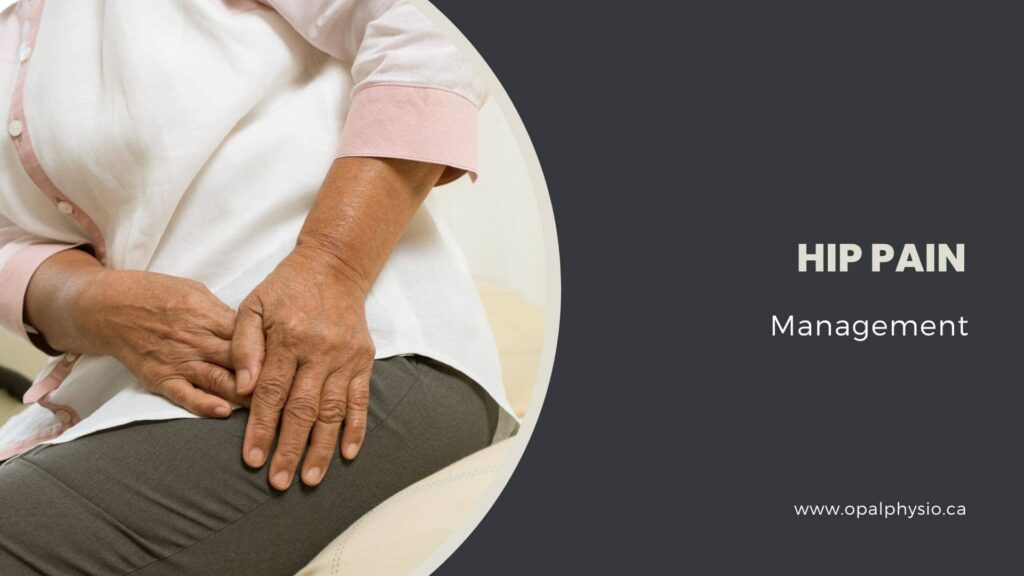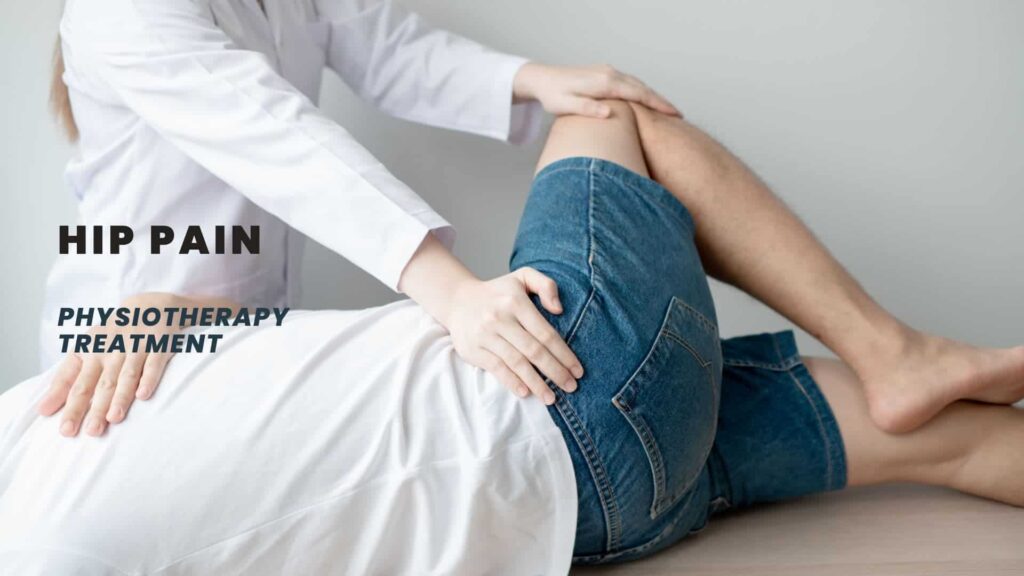Hip Pain
Hip pain is a condition where there is a sudden or gradual onset of pain in the groin, hip, thigh, and buttocks. Hip pain is a common condition caused by an injury, disease, or aging. Hip pain can range from mild to severe, and it can also affect your daily life.
Various factors, including arthritis, injuries, bursitis, and structural issues with the hip joint, can cause hip pain.
Hip pain treatment
Physiotherapy management for hip pain focuses on addressing these issues through exercises, stretches, and other treatments. At Opl Physio, working with our physical therapy team can help improve your hip discomfort and increase your range of motion, increase strength and muscle engagement around the hip joint, and alleviate the pain that prevents you from walking or running properly.

Hip Joint
The hip joint is a ball and socket joint that connects the thigh bone to the pelvis. The hip is one of the largest joints in the body, comprising many parts. These parts include the femur (thigh bone), pelvis, sacroiliac joint (where the spine meets the pelvis), pelvic bones, hip socket, and muscles around the hip joint.
The hip joint is surrounded by a complex structure of articular cartilage, muscles, ligaments, tendons and synovial fluid, all involved with joint protection and movement. The primary function of the hip joint is to enable rotation, flexion and extension of the hip relative to the trunk. A complex series of reciprocal movements between bones, muscles, and soft tissues achieve this. Hip joint diseases are often associated with decreased mobility and pain in one or both hips; however, there can be many causes.
Causes of hip pain:
The most common causes of pain in the hip are muscle strain or injury and arthritis in hips, but it can be caused by a wide variety of factors, which include:
Risk factors for hip pain:
Risk factors for hip pain and the severity can vary greatly. Some of the most common risk factors are:
Symptoms of hip pain
Hip pain symptoms can vary depending on the severity of the pain condition. It is usually characterized by a dull, persistent ache that worsens with activity and is often accompanied by a limp or weakness in the hip.
Some common signs and symptoms of hip pain include:
Symptoms can be sudden in case of injuries but gradual in conditions like arthritis. Seeking medical care is recommended if the pain is severe, accompanied by fever, or persists for over a week despite home treatment. An accurate diagnosis is vital to determine the underlying cause and guide appropriate therapy.
What are the management options for hip pain?
The treatment or management of this pain depends on the severity of the condition and how long it lasts.
Mild to moderate symptoms – are managed conservatively using
Surgery is often recommended for moderate to severe cases depending on the cause of the pain, which can include total hip replacement, partial hip replacement and lumbar spinal surgeries.
Most people will experience hip pain from time to time without needing any help. The typical symptoms of painful hips include sharp or aching pain in the hip joint and redness and swelling, usually when the hip is overused for long periods. However, if the pain persists for days and does not get better even after taking breaks from the activity causing it, you should consult your doctor for further investigation.
It is necessary to identify the precise cause of the pain to get the appropriate treatment.
Hip Pain – When to seek medical attention?
You should seek immediate medical attention for hip pain if an injury causes it and includes any of the following symptoms:
- Intense pain
- Sudden swelling
- Inability to move the hip or bear weight on the affected leg
- Deformity or instability of the hip joint
- Signs of infection, such as fever, redness, or warmth around the hip area

Physiotherapy treatment for hip pain:
Physiotherapy treatment for pain in the hip joint can vary depending on the cause. Physiotherapy treatment for pain caused by arthritis or injury would involve rehabilitation to help improve the range of motion, strengthening and stretching to improve functional mobility and return to activities.
The physiotherapists aim to reduce pain and restore movement and function.
Hip pain treatment in Langley
At Opal Physiotherapy, our physiotherapists use varied treatment methods to help relieve pain and restore movement in the hip joint.
Opal Physiotherapists are trained to work with patients of all ages, and our physio treatment plans are tailored to each individual’s needs and conditions.
Some common physiotherapy interventions for hip pain include:
- Flexibility exercises: The aim is to improve the hip range of motion and reduce stiffness.
- Strengthening exercises: Target specific hip joint muscles to improve strength and stability.
- Endurance training: These exercises help to improve overall hip function and daily life participation.
- Manual therapy: This involves using hands-on techniques to improve joint mobility flexibility and reduce pain.
- Modalities: Physiotherapists may use various modalities such as ultrasound, heat packs, and LLLT to alleviate pain and promote healing.
- Education and advice: Physiotherapists guide appropriate rest, exercise, and sports options while undergoing hip rehabilitation
Pain in the hip can become a considerable problem with aging and our hectic lifestyles. Physiotherapy treatment is available to help with hip pain and other musculoskeletal issues. Many people in the Langley and Lower Mainland region are turning to Opal for Physiotherapy treatments to relieve pain and improve mobility issues.
At Opal Physio, our physiotherapists can help with your hip pain, recovery and return to normal activities. Give us a call at 604-532-7887 or Contact Us.
